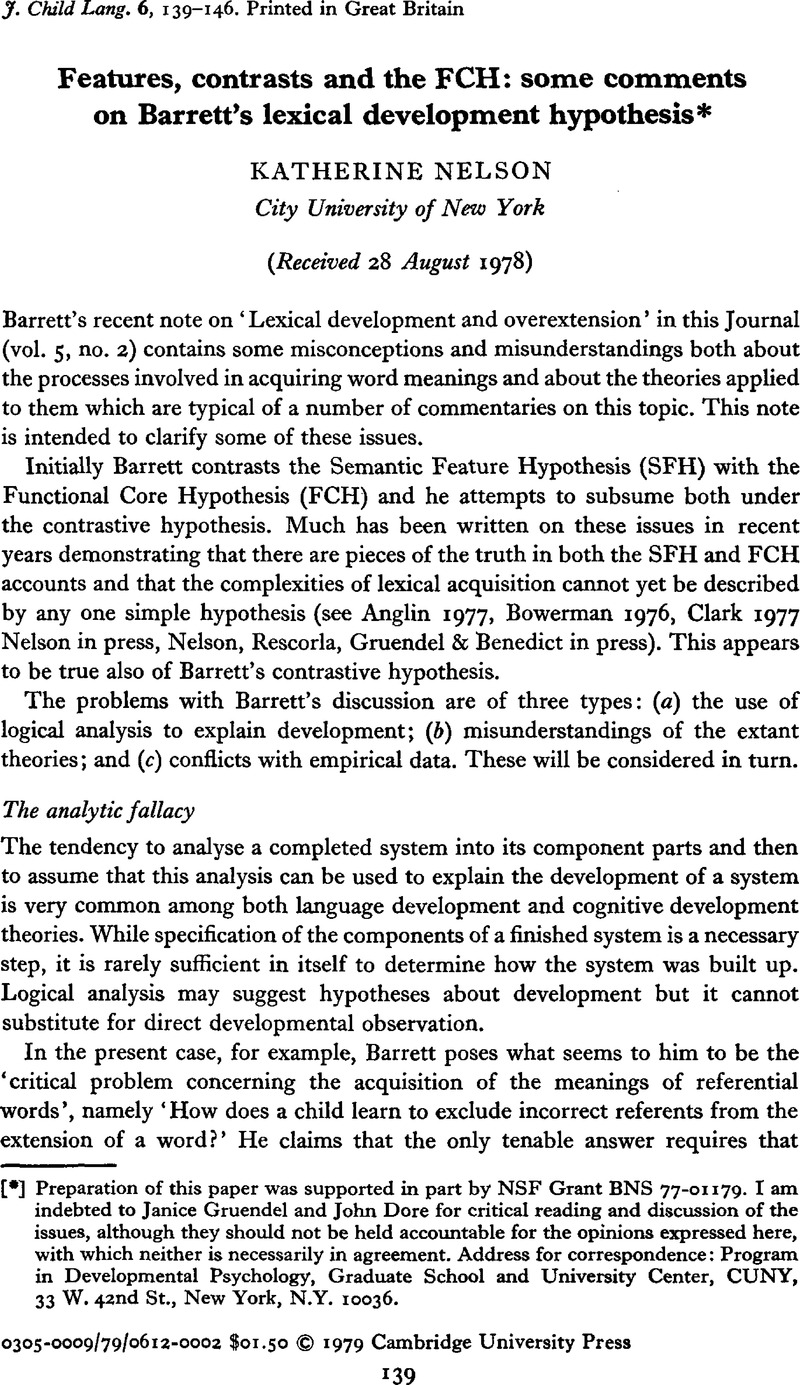Crossref Citations
This article has been cited by the following publications. This list is generated based on data provided by Crossref.
Blewitt, Pamela
1982.
Advances in Child Development and Behavior Volume 17.
Vol. 17,
Issue. ,
p.
139.
Gathercole, Virginia C.
1982.
Decrements in children's responses to big and tall: A reconsideration of the potential Cognitive and Semantic causes.
Journal of Experimental Child Psychology,
Vol. 34,
Issue. 1,
p.
156.
Wannenmacher, W.
and
Seiler, Th. B.
1983.
Concept Development and the Development of Word Meaning.
Vol. 12,
Issue. ,
p.
1.
Merriman, William E.
1986.
The Development of Word Meaning.
p.
1.
Gathercole, Virginia C.
1987.
The contrastive hypothesis for the acquisition of word meaning: a reconsideration of the theory.
Journal of Child Language,
Vol. 14,
Issue. 3,
p.
493.
STEMMER, NATHAN
1989.
Empiricist versus Prototype Theories of Language Acquisition.
Mind & Language,
Vol. 4,
Issue. 3,
p.
201.
NELSON, KATHERINE
2014.
A matter of meaning: reflections on forty years of JCL.
Journal of Child Language,
Vol. 41,
Issue. S1,
p.
93.


